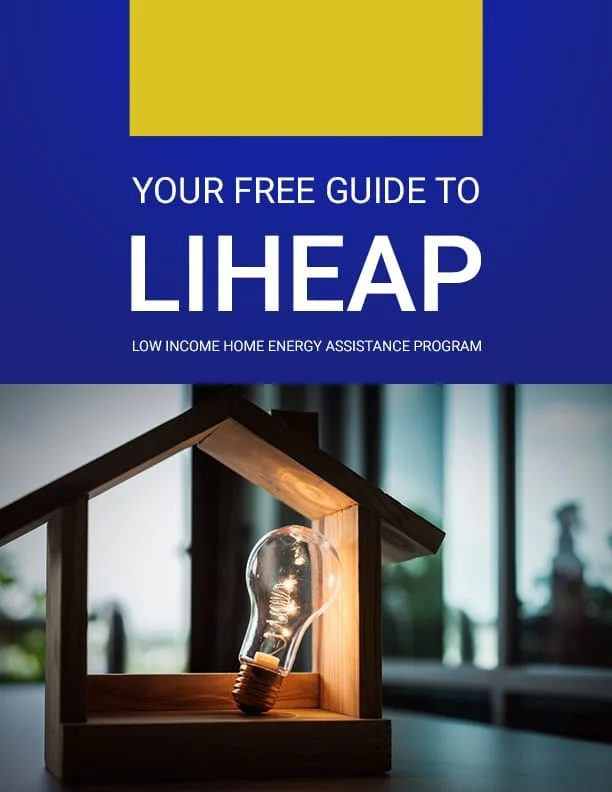Your Free Guide to Understanding Section 8 Amounts
Your Free Guide to Understanding Section 8 Amounts
We are privately owned and not affiliated with the government in any way or form.

Introduction to Section 8
The Section 8 program, formally known as the Housing Choice Voucher Program, is a vital resource that assists low-income individuals and families in finding safe and affordable housing. It is one of several federal assistance programs administered by the U.S. Department of Housing and Urban Development (HUD). It is overseen locally by individual Public Housing Agencies (PHAs).
The program pays a portion of the rent for qualifying individuals who may not be able to afford safe, sanitary housing. The total amount of money that Section 8 provides varies depending on a few factors, one of which is the Fair Market Rent (FMR).
One of the key components of this program is the determination of Fair Market Rent. In this guide, we will delve into FMR, including what it is, how it affects the Section 8 program and how to find the FMR in your own area.
How Does Section 8 Work?
To grasp how Section 8 operates, it’s essential to understand its two primary components: tenant-based vouchers and project-based vouchers.
Tenant-based vouchers are the most common and versatile form of Section 8 assistance. Eligible households receive a voucher that covers a portion of their rent directly to the landlord. The tenant is responsible for paying the remainder, which is typically set at 30% of their income. This system promotes affordability, as participants are only required to contribute what they can reasonably afford.
On the other hand, project-based vouchers are tied to a specific housing development. In these cases, the assistance stays with the property, rather than the tenant. While this limits the tenant’s mobility, it ensures that a specific number of units in the development are affordable to low-income individuals or families.
Section 8 Requirements

Understanding the eligibility criteria is crucial before applying for Section 8 assistance. The main eligibility factors include:
- Income Limits: The primary determinant is your household income, which must be below a certain threshold set by your local Public Housing Agency (PHA). The income limits can vary depending on the area’s median income and the size of your family.
- Citizenship or Eligible Immigrant Status: Section 8 is generally open to U.S. citizens and eligible non-citizens. Non-citizens must have the proper immigration status to qualify.
- Criminal Background Checks: Some criminal convictions may disqualify you from Section 8 eligibility. However, policies on this can vary by PHA.
- Asset Limits: As of 2025, families may not have more than $103,200 in assets. This figure is subject to change each year to reflect changes in cost of living or inflation. Assets are defined as any items of value that a household owns.
Applying for Section 8
The application process for Section 8 is straightforward but requires careful attention to detail. Here are the typical steps involved:
- Find Your Local PHA: Locate your nearest Public Housing Agency. Refer to the “PHA Contact Information” section of this guide for more information.
- Complete the Application: Obtain and complete the Section 8 application provided by your PHA. Ensure you fill out all required fields and attach any necessary documentation, such as proof of income and identification.
- Submit Your Application: Submit your application to the PHA within the specified timeframe. Keep copies of all documents and records for reference.
- Wait for Processing: The PHA will process your application and determine your eligibility. This may take some time due to the high demand for Section 8 assistance.
- Receive Notification: Once your application is processed, you should be notified about your eligibility status. If approved, you may be placed on a waiting list due to high demand. When there is housing available for you, you should receive a housing choice voucher.
What is Fair Market Rent?
Fair Market Rent (FMR) is a critical benchmark used by HUD to determine the maximum rental payment it will subsidize through the Housing Choice Voucher Program. In essence, FMR represents the typical rental cost, including utilities (except telephone), for privately owned, decent, safe, and sanitary rental housing in a particular area.
It is important to note that FMRs vary from one geographic area to another, as the cost of housing differs significantly across the United States.
How is Fair Market Rent Determined?

HUD calculates Fair Market Rent through an extensive process that involves analyzing rental data, considering the local housing market, and accounting for various factors, including:
- Market Surveys: HUD conducts market surveys in metropolitan areas to collect rental data from landlords, property managers, and tenants. This data provides a snapshot of the prevailing rental rates.
- Rent Comparisons: HUD compares the rental data collected to determine the median or typical rent for various bedroom sizes (e.g., one-bedroom, two-bedroom, etc.) within a specific geographic area.
- Adjustments: FMRs are adjusted annually to account for changes in rental market conditions, such as inflation and shifts in demand.
- Fair Market Rent Areas: HUD divides the United States into Fair Market Rent areas, each with its FMR values. These areas are typically based on metropolitan regions or counties.
Fair Market Rent vs. Actual Rent
It’s important to note that Fair Market Rent is a guideline set by HUD, and it may not necessarily reflect the actual rent charged by landlords in your area. Landlords have the flexibility to set their rental rates, but they cannot charge more than the FMR for Section 8 voucher holders.
Here’s a more detailed comparison:
| Fair Market Rent | Actual Rent | |
| Set By | FMR is determined by the U.S. Department of Housing and Urban Development (HUD) based on extensive market surveys and data analysis. | Actual rent is determined by individual landlords, property owners, or property management companies. |
| Amounts | It is a guideline or cap that represents the maximum amount HUD will subsidize for a specific area and bedroom size. | Actual rents can vary significantly within the same geographic area based on factors such as property type, location, amenities, and market demand. |
| Stability | FMR is consistent within a particular geographic area, meaning that all Section 8 voucher holders in the same area with the same bedroom size receive the same FMR. | While Section 8 participants are bound by FMR limits, landlords have the flexibility to negotiate rent prices with non-Section 8 tenants. |
| Changes | FMRs are updated annually to account for changes in the rental market, such as inflation and shifts in demand. | In some cases, especially in high-demand markets, actual rent may exceed the FMR, requiring the tenant to cover the difference if they choose a rental property with a higher rent. |
The Role of Fair Market Rent in Section 8
For Section 8 voucher holders, Fair Market Rent serves as a crucial guideline. When you apply and get approved for the program, you may be wondering how much money the program will pay toward your rent. In addition to your household income, the FMR in your area helps determine that figure.
Here’s how it plays a pivotal role in the program:
- Rent Calculation: The rental subsidy amount provided to Section 8 voucher holders is based on the difference between the FMR for their area and 30% of their household’s adjusted income. Voucher holders are generally expected to pay about 30% of their income towards rent, and the voucher covers the rest up to the FMR.
- Housing Choice: Section 8 voucher holders have the freedom to choose any rental property, as long as the landlord is willing to accept the voucher and the unit meets the standards of the program. However, the rent must not exceed the FMR for that area.
- Quality Assurance: HUD sets FMRs to ensure that Section 8 participants can access safe and decent housing. This ensures that voucher holders can afford housing that meets HUD’s quality standards.
- Local Variations: FMRs are specific to geographic areas, meaning that the amount of subsidy a voucher holder receives can vary depending on their location. Urban areas generally have higher FMRs than rural ones due to differences in rental costs.
How to Find Fair Market Rent in Your Area

Now that you understand the significance of Fair Market Rent within the Section 8 program, here’s how you can find the FMR for your specific area:
1. HUD’s Online Database
HUD maintains an online database where you can search for the Fair Market Rent for your city or county. This database is updated annually and provides a comprehensive list of FMRs for various bedroom sizes.
You can search for the FMR in your area here: https://www.huduser.gov/portal/datasets/fmr.html#year2025
For 2024 FMRs, navigate to the button that reads “Click Here For FY2025 FMRs.” Then, choose your state and select a county or town from the list. Alternatively, you can find a list of all FMRs in your state by clicking “Statewide FMRs.”
2. Contact Your Local Public Housing Authority (PHA)
Your local Public Housing Authority can be a valuable resource for information on Fair Market Rent. They can provide you with the most up-to-date FMR figures for your area and help you navigate the Section 8 application process.
To find a PHA in your area, refer to the “PHA Contact Information” section of this guide. Or, you can use HUD’s online database here: https://www.hud.gov/program_offices/public_indian_housing/pha/contacts
Just choose your state or territory from the interactive map or drop-down menu.
PHA Contact Information
You may consider contacting your local PHA for precise, up-to-date information regarding voucher payment standards and maximum amounts in your area. Each PHA should have the most accurate and current data to guide you in understanding the assistance that may be available.
The following list provides links to contact information for PHAs in your state, as well as state-specific resources for more info.
Alabama
All PHAs: https://www.hud.gov/sites/dfiles/PIH/documents/PHA_Contact_Report_AL.pdf
More Info: https://www.hud.gov/states/Alabama
Alaska
All PHAs: https://www.hud.gov/sites/dfiles/PIH/documents/PHA_Contact_Report_AK.pdf
More Info: https://www.hud.gov/states/alaska/
Arizona
All PHAs: https://www.hud.gov/sites/dfiles/PIH/documents/PHA_Contact_Report_AZ.pdf
More Info: https://www.hud.gov/states/arizona
Arkansas
All PHAs: https://www.hud.gov/sites/dfiles/PIH/documents/PHA_Contact_Report_AR.pdf
More Info: https://www.hud.gov/states/arkansas
California
All PHAs: https://www.hud.gov/sites/dfiles/PIH/documents/PHA_Contact_Report_CA.pdf
More Info: https://www.hud.gov/states/california
Colorado
All PHAs: https://www.hud.gov/sites/dfiles/PIH/documents/PHA_Contact_Report_CO.pdf
More Info: https://www.hud.gov/states/colorado
Connecticut
All PHAs: https://www.hud.gov/sites/dfiles/PIH/documents/PHA_Contact_Report_CT.pdf
More Info: https://www.hud.gov/states/connecticut
Delaware
All PHAs: https://www.hud.gov/sites/dfiles/PIH/documents/PHA_Contact_Report_DE.pdf
More Info: https://www.hud.gov/states/delaware
Florida
All PHAs: https://www.hud.gov/sites/dfiles/PIH/documents/PHA_Contact_Report_FL.pdf
More Info: https://www.hud.gov/states/florida
Georgia
All PHAs: https://www.hud.gov/sites/dfiles/PIH/documents/PHA_Contact_Report_GA.pdf
More Info: https://www.hud.gov/states/georgia
Guam
All PHAs: https://www.hud.gov/sites/dfiles/PIH/documents/PHA_Contact_Report_GU.pdf
Open Apps: https://www.ghura.org/online-housing-applications
More Info: https://www.ghura.org/contact-info
Hawaii
All PHAs: https://www.hud.gov/sites/dfiles/PIH/documents/PHA_Contact_Report_HI.pdf
More Info: https://www.hud.gov/states/hawaii
Idaho
All PHAs: https://www.hud.gov/sites/dfiles/PIH/documents/PHA_Contact_Report_ID.pdf
More Info: https://www.hud.gov/states/idaho
Illinois
All PHAs: https://www.hud.gov/sites/dfiles/PIH/documents/PHA_Contact_Report_IL.pdf
More Info: https://www.hud.gov/states/illinois
Indiana
All PHAs: https://www.hud.gov/sites/dfiles/PIH/documents/PHA_Contact_Report_IN.pdf
More Info: https://www.hud.gov/states/indiana
Iowa
All PHAs: https://www.hud.gov/sites/dfiles/PIH/documents/PHA_Contact_Report_IA.pdf
More Info: https://www.hud.gov/states/iowa
Kansas
All PHAs: https://www.hud.gov/sites/dfiles/PIH/documents/PHA_Contact_Report_KS.pdf
More Info: https://www.hud.gov/states/kansas
Kentucky
All PHAs: https://www.hud.gov/sites/dfiles/PIH/documents/PHA_Contact_Report_KY.pdf
More Info: https://www.hud.gov/states/kentucky
Louisiana
All PHAs: https://www.hud.gov/sites/dfiles/PIH/documents/PHA_Contact_Report_LA.pdf
More Info: https://www.hud.gov/states/louisiana
Maine
All PHAs: https://www.hud.gov/sites/dfiles/PIH/documents/PHA_Contact_Report_ME.pdf
More Info: https://www.hud.gov/states/maine
Mariana Islands
All PHAs: https://www.hud.gov/sites/dfiles/PIH/documents/PHA_Contact_Report_MP.pdf
More Info: https://www.nmhcgov.net
Maryland
All PHAs: https://www.hud.gov/sites/dfiles/PIH/documents/PHA_Contact_Report_MD.pdf
More Info: https://www.hud.gov/states/maryland
Massachusetts
All PHAs: https://www.hud.gov/sites/dfiles/PIH/documents/PHA_Contact_Report_MA.pdf
More Info: https://www.hud.gov/states/massachusetts
Michigan
All PHAs: https://www.hud.gov/sites/dfiles/PIH/documents/PHA_Contact_Report_MI.pdf
More Info: https://www.hud.gov/states/michigan
Minnesota
All PHAs: https://www.hud.gov/sites/dfiles/PIH/documents/PHA_Contact_Report_MN.pdf
More Info: https://www.hud.gov/states/minnesota
Mississippi
All PHAs: https://www.hud.gov/sites/dfiles/PIH/documents/PHA_Contact_Report_MS.pdf
More Info: https://www.hud.gov/states/mississippi
Missouri
All PHAs: https://www.hud.gov/sites/dfiles/PIH/documents/PHA_Contact_Report_MO.pdf
More Info: https://www.hud.gov/states/missouri
Montana
All PHAs: https://www.hud.gov/sites/dfiles/PIH/documents/PHA_Contact_Report_MT.pdf
More Info: https://www.hud.gov/states/montana
Nebraska
All PHAs: https://www.hud.gov/sites/dfiles/PIH/documents/PHA_Contact_Report_NE.pdf
More Info: https://www.hud.gov/states/nebraska
Nevada
All PHAs: https://www.hud.gov/sites/dfiles/PIH/documents/PHA_Contact_Report_NV.pdf
More Info: https://www.hud.gov/states/nevada
New Hampshire
All PHAs: https://www.hud.gov/sites/dfiles/PIH/documents/PHA_Contact_Report_NH.pdf
More Info: https://www.hud.gov/states/new_hampshire
New Jersey
All PHAs: https://www.hud.gov/sites/dfiles/PIH/documents/PHA_Contact_Report_NJ.pdf
More Info: https://www.hud.gov/states/new-jersey
New Mexico
All PHAs: https://www.hud.gov/sites/dfiles/PIH/documents/PHA_Contact_Report_NM.pdf
More Info: https://www.hud.gov/states/new-mexico
New York
All PHAs: https://www.hud.gov/sites/dfiles/PIH/documents/PHA_Contact_Report_NY.pdf
More Info: https://www.hud.gov/states/new-york/
North Carolina
All PHAs: https://www.hud.gov/sites/dfiles/PIH/documents/PHA_Contact_Report_NC.pdf
More Info: https://www.hud.gov/states/north-carolina
North Dakota
All PHAs: https://www.hud.gov/sites/dfiles/PIH/documents/PHA_Contact_Report_ND.pdf
More Info: https://www.hud.gov/states/north-dakota
Ohio
All PHAs: https://www.hud.gov/sites/dfiles/PIH/documents/PHA_Contact_Report_OH.pdf
More Info: https://www.hud.gov/states/ohio
Oklahoma
All PHAs: https://www.hud.gov/sites/dfiles/PIH/documents/PHA_Contact_Report_OK.pdf
More Info: https://www.hud.gov/states/oklahoma
Oregon
All PHAs: https://www.hud.gov/sites/dfiles/PIH/documents/PHA_Contact_Report_OR.pdf
More Info: https://www.hud.gov/states/oregon
Pennsylvania
All PHAs: https://www.hud.gov/sites/dfiles/PIH/documents/PHA_Contact_Report_PA.pdf
More Info: https://www.hud.gov/states/pennsylvania
Puerto Rico
All PHAs: https://www.hud.gov/sites/dfiles/PIH/documents/PHA_Contact_Report_PR.pdf
More Info: https://www.hud.gov/states/puerto-rico
Rhode Island
All PHAs: https://www.hud.gov/sites/dfiles/PIH/documents/PHA_Contact_Report_RI.pdf
More Info: https://www.hud.gov/states/rhode-island
South Carolina
All PHAs: https://www.hud.gov/sites/dfiles/PIH/documents/PHA_Contact_Report_SC.pdf
More Info: https://www.hud.gov/states/south-carolina
South Dakota
All PHAs: https://www.hud.gov/sites/dfiles/PIH/documents/PHA_Contact_Report_SD.pdf
More Info: https://www.hud.gov/states/south-dakota
Tennessee
All PHAs: https://www.hud.gov/sites/dfiles/PIH/documents/PHA_Contact_Report_TN.pdf
More Info: https://www.hud.gov/states/tennessee
Texas
All PHAs: https://www.hud.gov/sites/dfiles/PIH/documents/PHA_Contact_Report_TX.pdf
More Info: https://www.hud.gov/states/texas
Utah
All PHAs: https://www.hud.gov/sites/dfiles/PIH/documents/PHA_Contact_Report_UT.pdf
More Info: https://www.hud.gov/states/utah
Vermont
All PHAs: https://www.hud.gov/sites/dfiles/PIH/documents/PHA_Contact_Report_VT.pdf
More Info: https://www.hud.gov/states/vermont
U.S. Virgin Islands
All PHAs: https://www.hud.gov/sites/dfiles/PIH/documents/PHA_Contact_Report_VI.pdf
More Info: https://www.hud.gov/states/us-virgin-islands
Virginia
All PHAs: https://www.hud.gov/sites/dfiles/PIH/documents/PHA_Contact_Report_VA.pdf
More Info: https://www.hud.gov/states/virginia
Washington
All PHAs: https://www.hud.gov/sites/dfiles/PIH/documents/PHA_Contact_Report_WA.pdf
More Info: https://www.hud.gov/states/washington
Washington, DC
All PHAs: https://www.hud.gov/sites/dfiles/PIH/documents/PHA_Contact_Report_DC.pdf
More Info: https://www.hud.gov/states/district-of-columbia
West Virginia
All PHAs: https://www.hud.gov/sites/dfiles/PIH/documents/PHA_Contact_Report_WV.pdf
More Info: https://www.hud.gov/states/west-virginia
Wisconsin
All PHAs: https://www.hud.gov/sites/dfiles/PIH/documents/PHA_Contact_Report_WI.pdf
More Info: https://www.hud.gov/states/wisconsin
Wyoming
All PHAs: https://www.hud.gov/sites/dfiles/PIH/documents/PHA_Contact_Report_WY.pdf
More Info: https://www.hud.gov/states/wyoming
Conclusion
Fair Market Rent is a pivotal element in the Section 8 Housing Choice Voucher program, ensuring that low-income individuals and families have access to safe and affordable housing. Understanding how FMR is calculated, its role in rent determination, and how to find the FMR for your area is crucial when participating in the Section 8 program.
By adhering to FMR guidelines, both tenants and landlords can benefit from this essential housing assistance initiative, helping to create stable and secure housing options for those in need.






